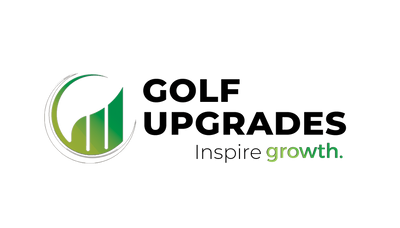1. Introduction to Golf
Golf is a sport that blends skill, strategy, and a love for the outdoors. You’ll typically play on an 18-hole course, each hole presenting its own layout and challenges. The objective? Sink your ball into each hole in the fewest strokes possible. Whether flying solo or teeing off with friends, golf offers a mix of personal improvement, friendly competition, and beautiful scenery.
2. Golf Equipment Essentials
Starting off right means having gear that’s comfortable and beginner-friendly.
Clubs
A basic set includes woods, irons, a wedge or two, and a putter. Begin with a driver, a few irons (like a 5, 7, and 9), a pitching wedge, and a putter. As your skills grow, you can build out your set.
Balls
Go with affordable balls to start—losing a few is totally normal. Down the road, you can try higher-quality balls suited to your playing style.
Tees and Accessories
Tees help you get clean contact from the get-go. Also, grab a lightweight golf bag and consider a glove for better grip.
Attire and Footwear
Comfort is key. Wear weather-appropriate clothes and shoes with good traction. Many courses have dress codes, so be sure to check beforehand.
3. Fundamental Techniques
Grip
Try the Vardon (overlapping) grip, where the pinky of your trailing hand (right hand if you’re right-handed) sits over the index finger of your lead hand. Keep it firm but not too tight—you want a fluid swing, not a death grip.
Stance and Posture
Set your foundation with feet shoulder-width apart, aligned parallel to your target line. Bend slightly at the hips, keep your spine relatively straight, and your knees lightly flexed. Balance your weight on the balls of your feet, and position the ball according to the club you’re using.
The Swing
A smooth swing is built in two parts:
- Backswing: Rotate hips and shoulders away from the target, keeping your lead arm straight.
- Downswing and Follow-Through: Start the downswing with your lower body, let the arms and club follow naturally, and finish facing the target with good balance.
Putting Basics
On the green, finesse trumps force. Use a lighter grip, position your eyes over the ball, and think of a gentle pendulum motion with minimal wrist action.
4. Rules and Etiquette
Respect for the game, the course, and fellow players is integral to golf.
Basic Rules
- Play the ball as it lies—no adjusting its position.
- The player farthest from the hole typically hits first.
- Learn how to handle bunkers, water hazards, and out-of-bounds situations.
Etiquette
- Maintain a good pace; don’t hold up groups behind you.
- Repair divots, rake bunkers, and fix ball marks to keep the course in great shape.
- Be considerate: stay quiet when others are hitting, and stand safely and out of their line of sight.
5. Health Benefits of Golf
Golf helps you stay active, improving cardiovascular health and muscle tone (all that walking adds up!). Mentally, the game challenges you to focus and think strategically, while the outdoor setting can help reduce stress. Plus, playing in groups fosters social connections, boosting overall well-being.
6. Getting Started and Improving
Lessons
Investing in a few lessons from a qualified instructor early on can prevent bad habits and accelerate improvement.
Practice
Spend time at the driving range and on practice greens. Short sessions focused on specific skills—like putting or chipping—work wonders.
Play
Start on shorter courses or play nine holes before tackling a full 18. The more you play, the more comfortable and confident you’ll feel.
Community
Join local clubs, beginner clinics, or social leagues. Making friends and learning together keeps things fun and motivating.
7. Quick Takeaways
- Focus on Fundamentals: A proper grip, stance, and posture are game-changers.
- Know Your Gear: Start simple, then add clubs as you improve.
- Follow the Rules & Etiquette: Respecting the course and other players makes for a better experience.
- Practice, Practice, Practice: Consistency comes from regular, focused practice sessions.
- Seek Guidance: Lessons and tips from experienced golfers help you progress faster.
- Enjoy the Process: Golf is a journey—embrace the learning curve and celebrate small wins.
8. Frequently Asked Questions
1. What equipment do I need to start?
A beginner-friendly set of clubs, affordable balls, tees, a glove, and comfortable attire. That’s all you need to get started.
2. How do I improve my swing quickly?
Focus on proper fundamentals—grip, stance, posture, and balance. Consider taking lessons early on, and practice regularly at the range.
3. Which rules and etiquette are most important for beginners?
Play at a good pace, respect the course by repairing divots and raking bunkers, and stay quiet and still when others are hitting.
4. How often should I practice?
Aim for one to two practice sessions a week, mixing in range work and on-course play. Consistent effort pays off.
5. Can golf really improve my health?
Definitely. Walking the course and swinging clubs provides light to moderate exercise, and the mental and social benefits are the icing on the cake.
9. Conclusion
Stepping into the world of golf can open the door to personal growth, new friendships, and a lifetime of challenges and rewards. By embracing the basics—from gear and technique to rules and etiquette—you set yourself up for steady improvement and great experiences on the course.
Keep practicing, stay patient, and enjoy the journey. Every golfer was once a beginner, and with time and persistence, you’ll find your own rhythm and confidence. Now it’s time to grab your clubs, head out to the fairways, and discover why so many people fall in love with this wonderful game.
10. Sources
- Golf Digest – Beginner’s equipment and swing tips
- Golf.com – Instructional articles and videos for golfers at all levels
- Health.com – Insights into golf’s physical and mental health benefits













